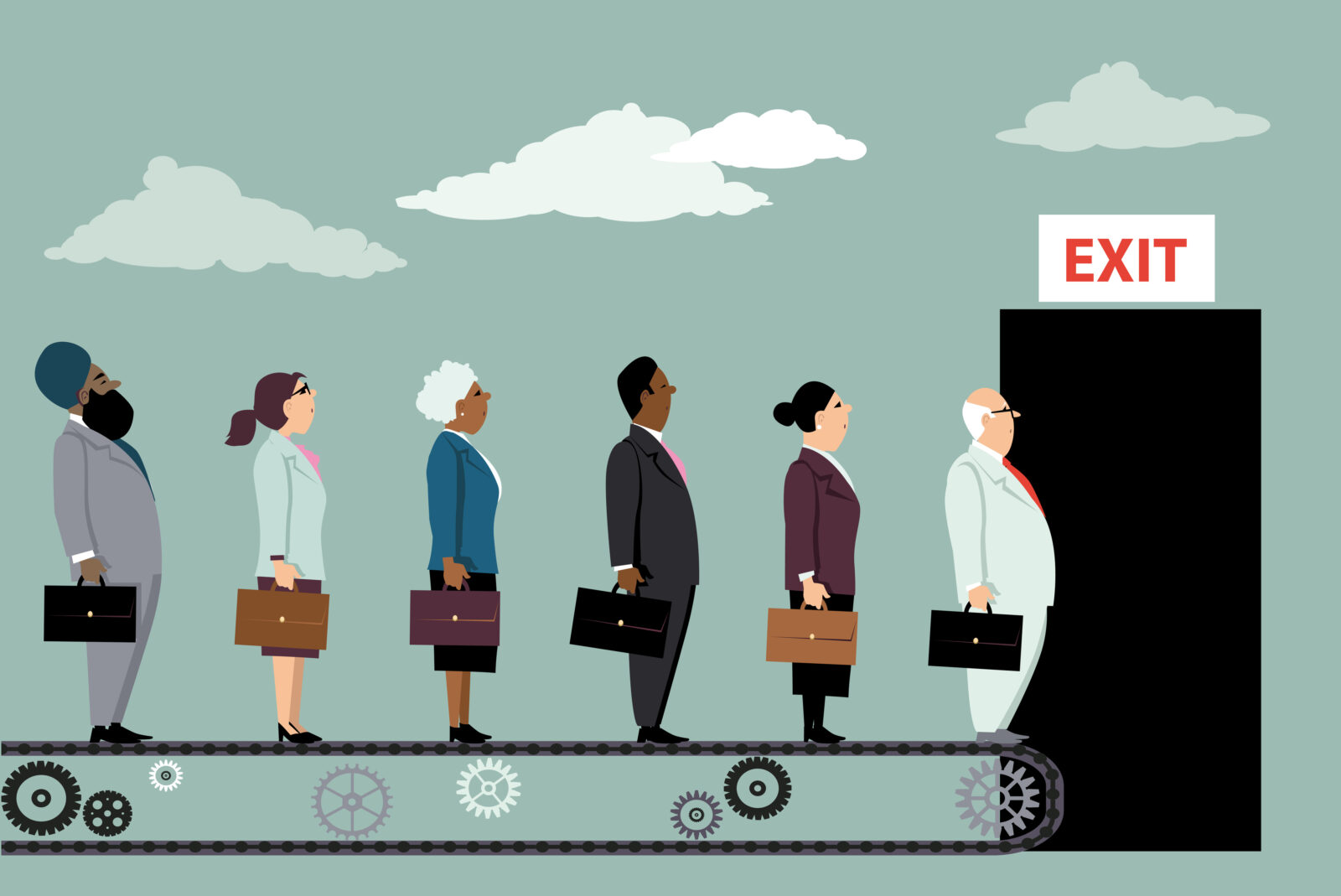Unlike the usual quick blogs that I generally post, on occasion, I am going to delve deeper into subjects that I find my readers need to be thinking about and considering.
I just spoke at the Maryland Society of Human Resources 2021 State Conference. One of the benefits of speaking at conferences is being able to listen to my peers and their amazing thought leadership. I sat in on Don Rheem’s presentation, where he was sharing how to create and retain an engaged workforce.
His presentation reminded me of a coaching meeting I had just a month before with a senior leader, Charlene, who manages a huge division with a very specialized and highly educated staff of mostly older Gen Xers and a few millennials. Charlene is a wonderful leader — she brings out the best in every member of her staff. She encourages, mentors, invites open dialog, and is respectful of her staff’s time and talents. I have the utmost respect for Charlene and her management style.
Upon hearing of the fourth resignation of a highly regarded member of her staff, and a fifth one asking for significantly more money and Fridays off permanently, Charlene uncharacteristically exclaimed, “Do employees really have that much of the upper hand? And when is it going to end? Don’t they have to come back to work at some point?”
I have been wondering the same, and so I did my own research. According to the experts, Charlene and other employers like her don’t currently have the upper hand. The workforce is leaving in droves and asking for more, and this is why:
Why do employees have more leverage than their employers right now?
The COVID-19 pandemic has driven Americans to retire earlier than ever before. A survey conducted by the Federal Reserve Bank of New York in July 2021 found that, on average, 50.1% of American adults expect to be working past the age of 62, and only 32.4% expect to work past the age of 67. This is the lowest these figures have been since the Bank began collecting this data in 2014.
In March 2020, immediately prior to the pandemic, the same survey found these likelihoods to be 55.4% and 36.2%, respectively. Multiple sources have reported a similar correlation between the pandemic and a decrease in the labor force. According to an article by Business Insider, around 1.5 million Americans “cited COVID-19 as the main reason they stayed out of the labor force in August [2021].” The chief U.S. economist at Oxford Economics told the New York Times that, as of July 2021, 2.5 million Americans have retired since the beginning of the pandemic in March 2020. Only half that number of people retired in all of 2019.
This data becomes particularly concerning for employers when you look at it with the added knowledge that there are fewer babies being born every year. According to a report by the CDC, the number of babies born in 2020 decreased 4% from that number in 2019. 2020 is the sixth year in a row that births in the U.S. have decreased. As a result, the ideal rate at which babies need to be born to replace older workers who retire and die is further from being met every year.
Immigration patterns also affect the number of people in America’s workforce. The number of foreign-born people in the American labor force has grown steadily since the 1980s. In 2019, immigrants made up 17.2% of the American labor force. With Gen X adults retiring and fewer babies being born, the U.S. Census Bureau has reported that maintaining high levels of legal immigration is necessary to keep the U.S. population from shrinking significantly over time. So far, the U.S. isn’t succeeding in bringing more immigrants — COVID-19 travel restrictions and immigration policy have decreased the number of new foreign arrivals to the U.S. by 64% in just the last fiscal year.
What do fewer babies and immigrants mean for the current workforce? Since there are fewer people able to replace them and fill desirable positions, younger workers feel they have far greater leverage in their employment than before. In the same survey I mentioned before, the Federal Reserve Bank of New York found that people looking for new employment feel that they are more likely to receive an offer in the next few months than they did a year ago.And there are lots of younger workers looking for new employment. Four million Americans quit their jobs in July 2021 alone, and millennials are leading this mass exit. Bankrate conducted a survey in August of 2021 that revealed that 77% of Millennials and 63% of Gen Z workers are planning on looking for new employment within the next year. Many Millennials and Gen Z workers want to leave their employment to look for a better work-life balance, higher pay, and opportunities for remote work.
These patterns aren’t only appearing for knowledge and office workers, either. Employers and leaders with very young or less skilled workforces are facing the same problem of employees leaving. As I was heading out of the conference, I spoke with a man who owns and runs a trucking company. He felt his HR manager wasn’t doing a good enough job with employee retention, so he went to the conference to learn more about retention himself. Two things he said stood out to me as we walked to the parking lot to leave the conference: first, “Our HR director was doing a better job than I thought. She’s been warning us about this for years,” followed by, “I guess the $20,000 hiring bonus we are giving, along with the training, is not going to be enough.”
How can you attract and retain employees during this time?
In this climate I’ve just described, the key question is: how do we keep employees we already have or are about to hire? Fortunately, there is already research being done to find out how employers can do just this.
Research shows that overall, employees need to feel supported by their employer and identified with their work. A survey of 1,500 employees conducted by the World Economic Forum in September 2021 demonstrated that the brands with the highest employee retention rate rank high in connection, progress, and employee development. Connection is how much an employee feels personally inspired by a brand’s mission, progress is how meaningful an employee feels the brand’s work is, and employee development is how supported an employee feels by the brand they work for in their own career growth. Only a few brands ranked high in all three areas, but for those brands, “90 percent of their employees said they intended to remain.”
There are concrete, proven steps you can take to foster connection, progress, and employee development in your workplace. According to HR experts interviewed for an article in the Harvard Business Review, managers can easily speak to their employees about their personal goals regularly, spotlight and celebrate employee achievements, and encourage social interaction between employees to foster what the article calls a ‘culture of solidarity.’
However, it’s just as important to listen to what your employees need and be open to adapting. In a survey of 4,000 employees worldwide conducted in March 2021, “over half of respondents (53%) said a long-term remote work policy would make them consider staying at their organization longer, and 10% said they would probably quit their job if they were forced back into the office full-time.” Recent workplace experiments in New Zealand, Japan, and Iceland proved that a four-day workweek dramatically improves employee productivity and overall well-being. In a survey conducted in 2020, 53% of Canadian adults supported the idea of a 4-day workweek — a 6% increase from the last time the survey was conducted in 2018. Six years ago, Gravity Payments CEO Dan Price famously cut his own salary from $1.1 million to $70,000 so that all his employees’ salaries could be raised to $70,000 – since then, the company has doubled its number of employees and halved its turnover rate. Employees feel so connected to the company that many voluntarily took a $40,000 pay cut to help the company stay afloat during the worst months of the pandemic.
None of this is to say that your workplace has to incorporate dramatic changes in its remote work policy, workweek, or salary structure to get employees to stay. It is to say that employees actively want and even benefit from changes to the traditional workplace structure. Knowing what changes employees want can be determined by asking them frankly, conducting stay interviews, or hiring a consultant like me to implement a company-wide survey on the subject and produce an analysis report for management.
To Charlene and other employers like her, I say: employees do have the upper hand at the moment. Although experts agree that this leverage won’t be permanent, the workforce has still changed forever and will not return exactly to how it was pre-pandemic. It’s essential for leaders to adapt to this new dynamic so they can attract and keep employees in the long-term.





0 Comments